Service Design
Harbor: Recovery to the best possible New Normal
Project Objective
The purpose of the project was to identify an opportunity area either unexplored or that could be positioned for a superior design.
“How might we help individuals inflicted with a physical injury recover to the best possible new normal?”
The Problem
When people have an accident which leaves them with a physical injury, it poses a huge setback in their day to day life. In turn with dealing with the new injury and associated discomfort, they have to accommodate their ongoing professional and personal responsibilities. In addition, they may be unable to engage in many of the activities they generally enjoy on a regular basis. Click through the images above to view one's thoughts from the struggle to the breakdown.
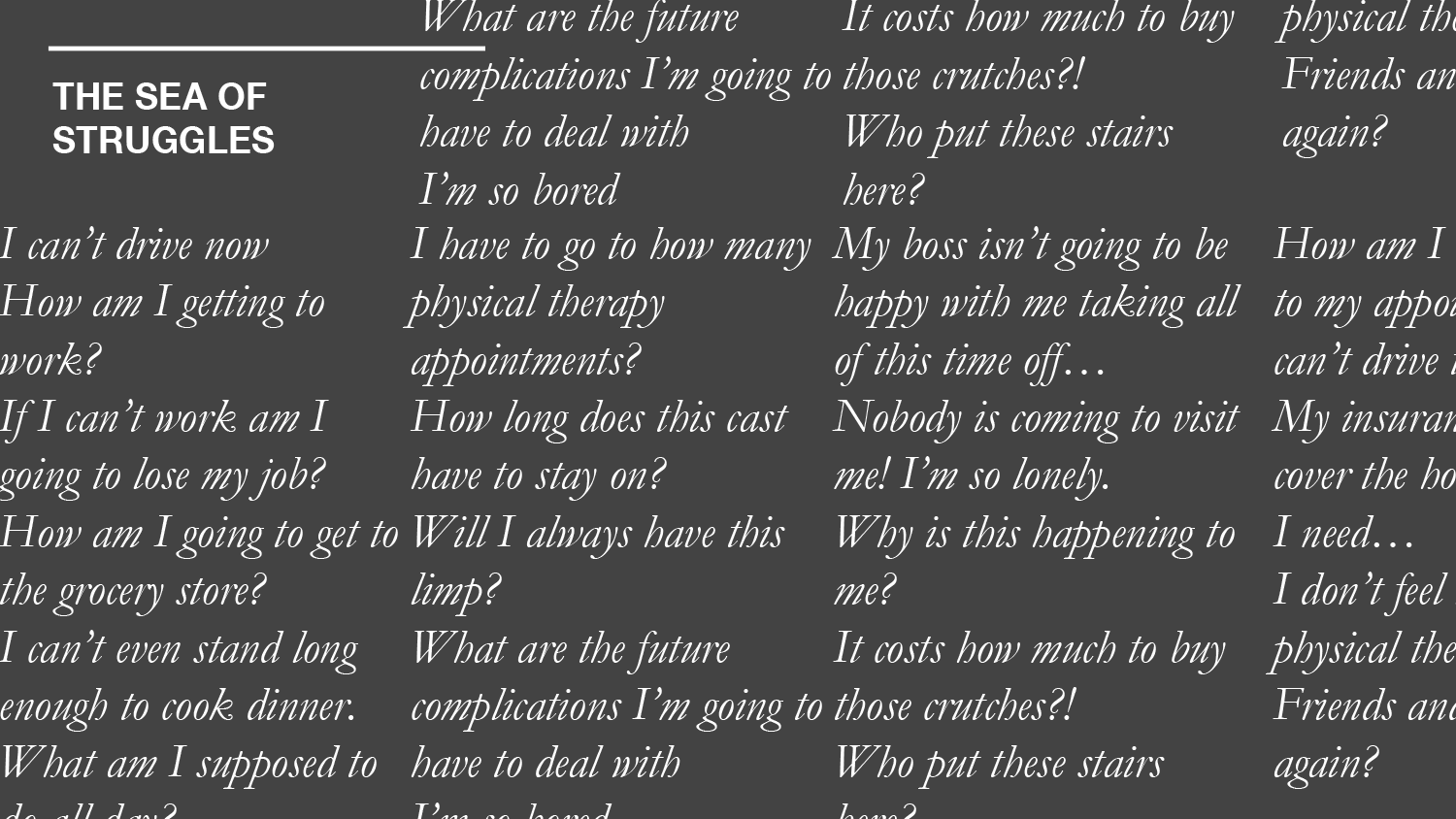
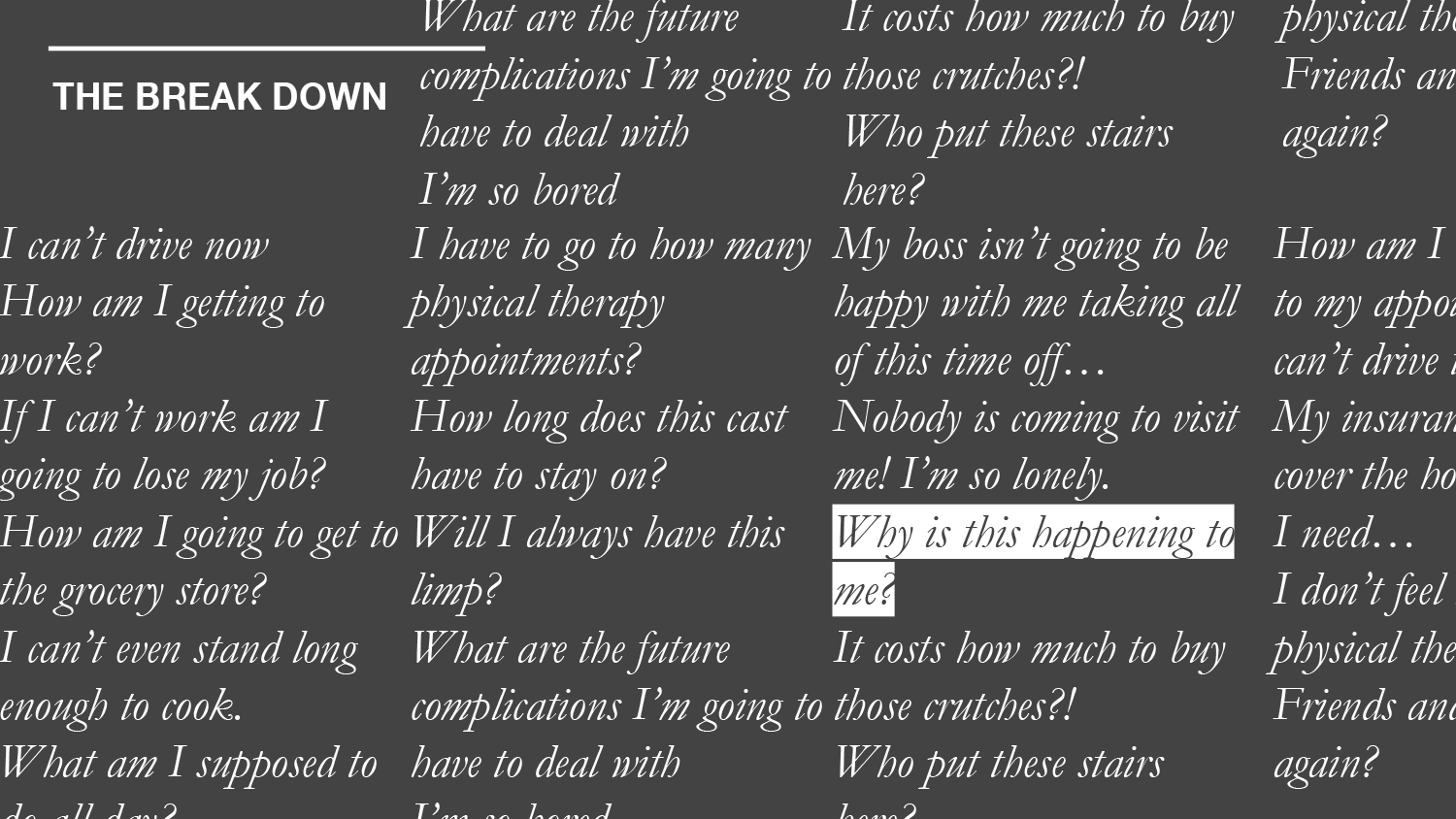

Insights
Click through the images to view the insights identified from primary and secondary research
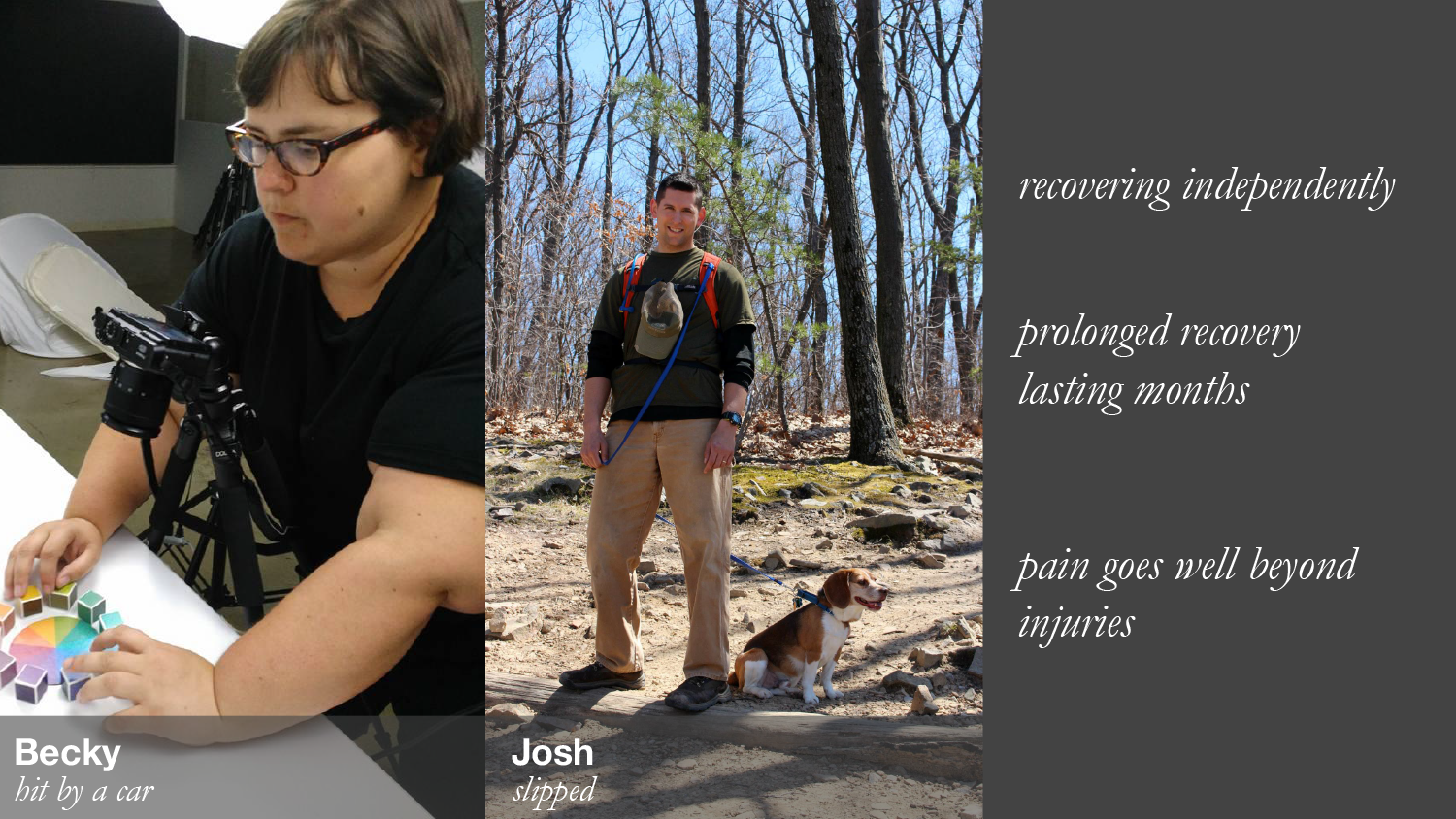
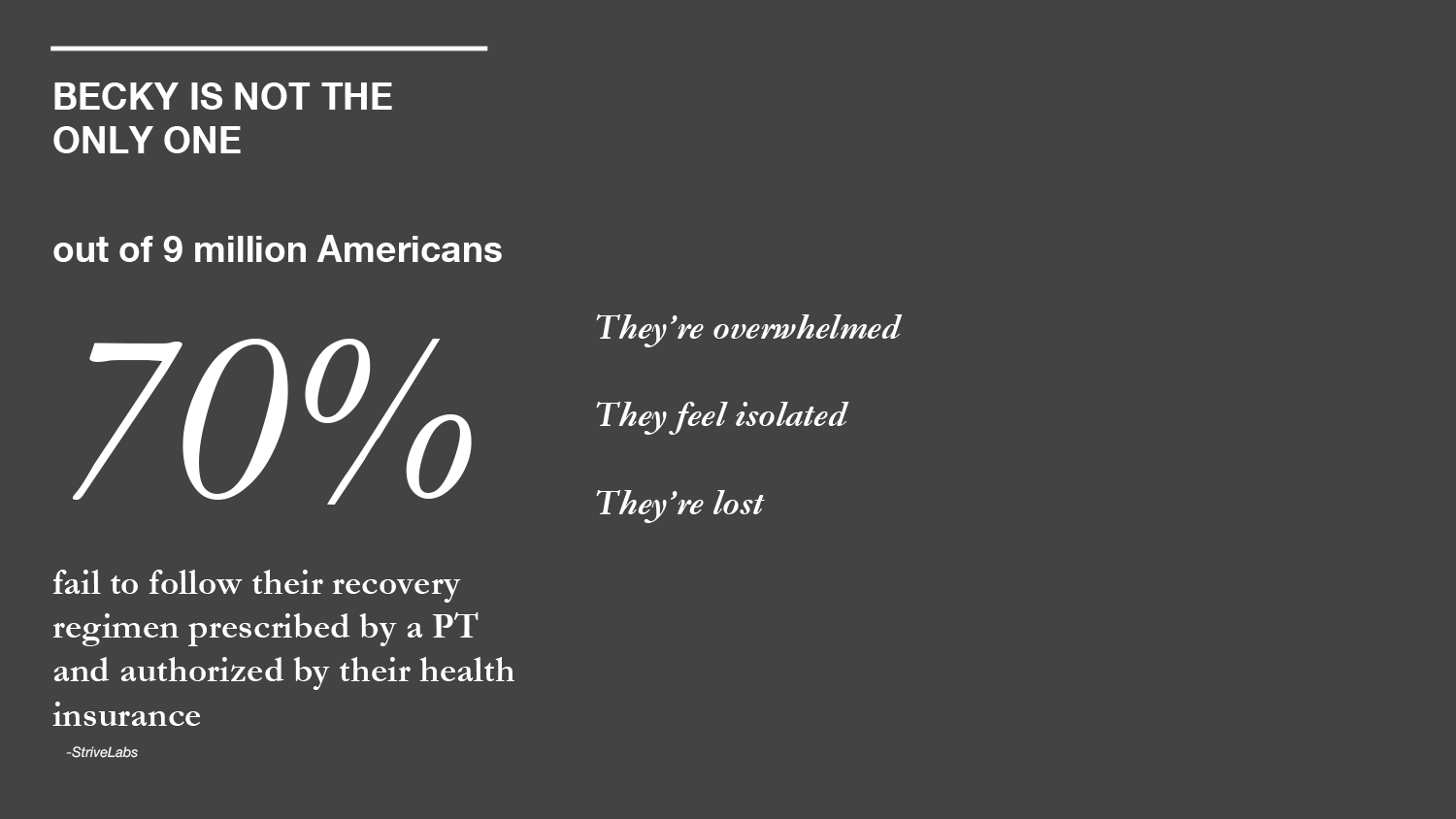
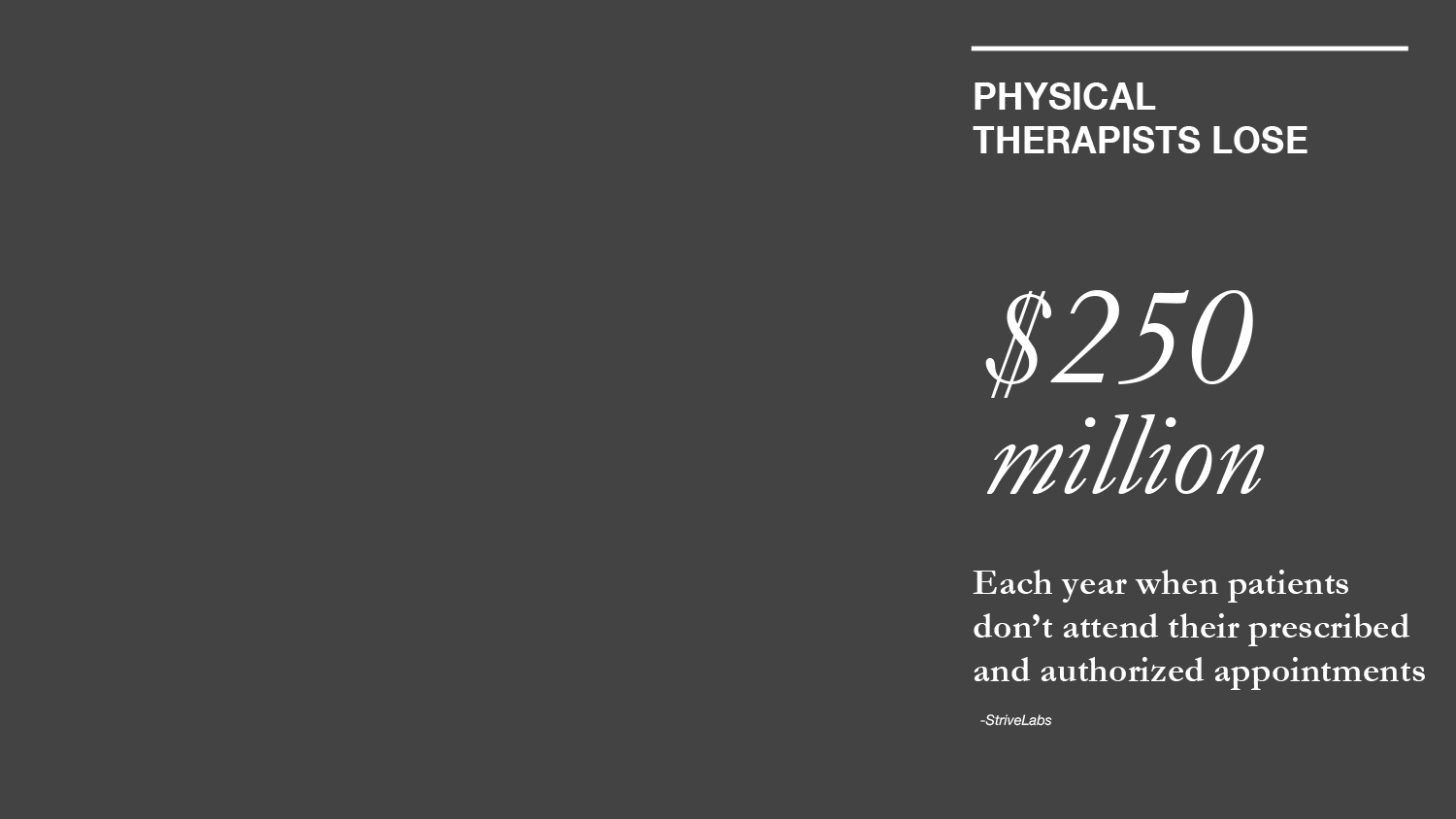

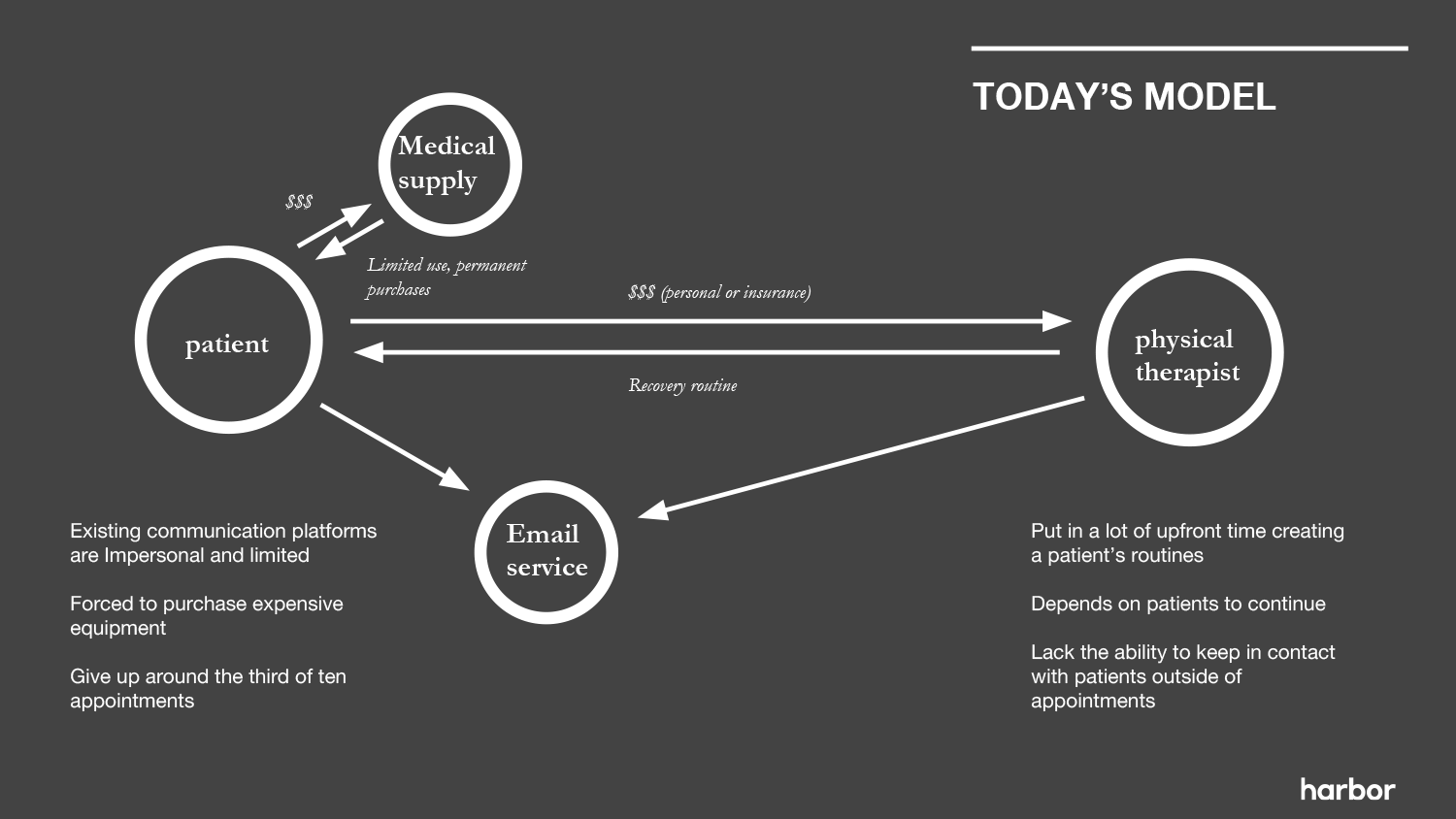
The three key insights that helped us shape the solution were:
- The real pain of a debilitating injury is feeling outcast from loved ones and favorite activities
- A recovering patient feels guilty for putting a significant burden on their caretakers
- People actively avoid seeking medical advice when coping with an injury for fear of a negative prognosis
Solution
Click through the images to learn about the Harbor way - it's service pitch, features and value web. Followed by an app prototype & financial model.
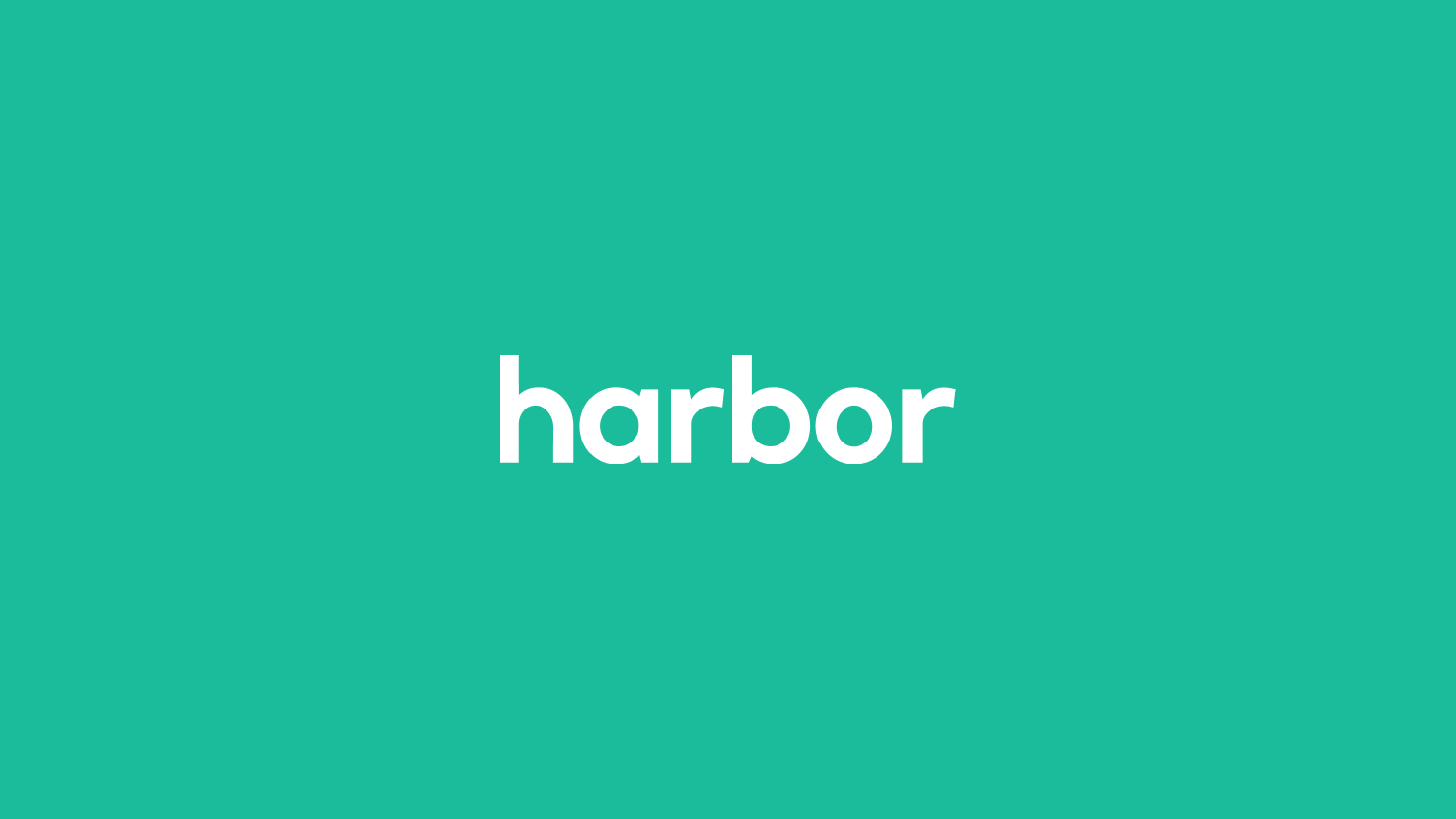
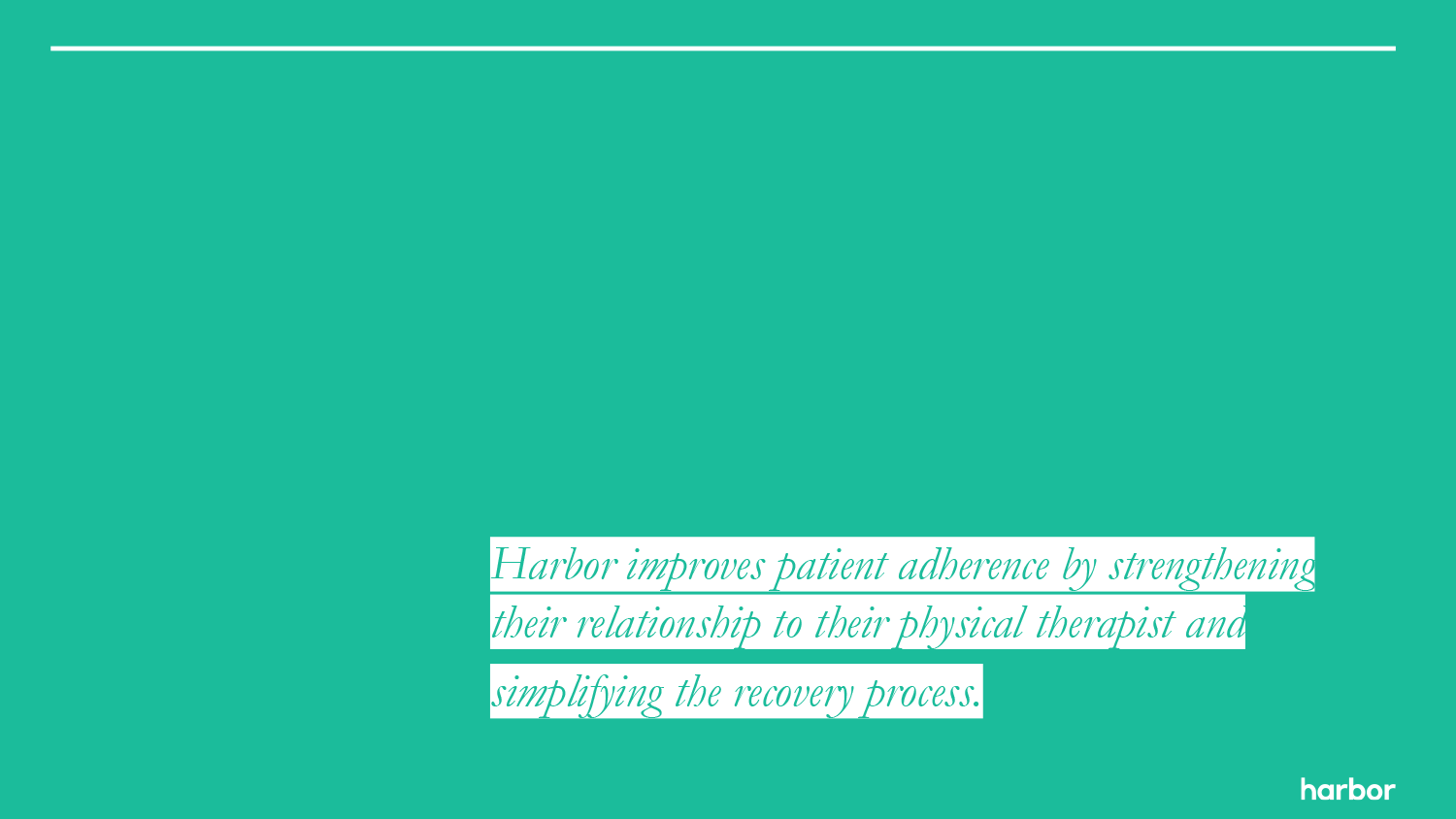

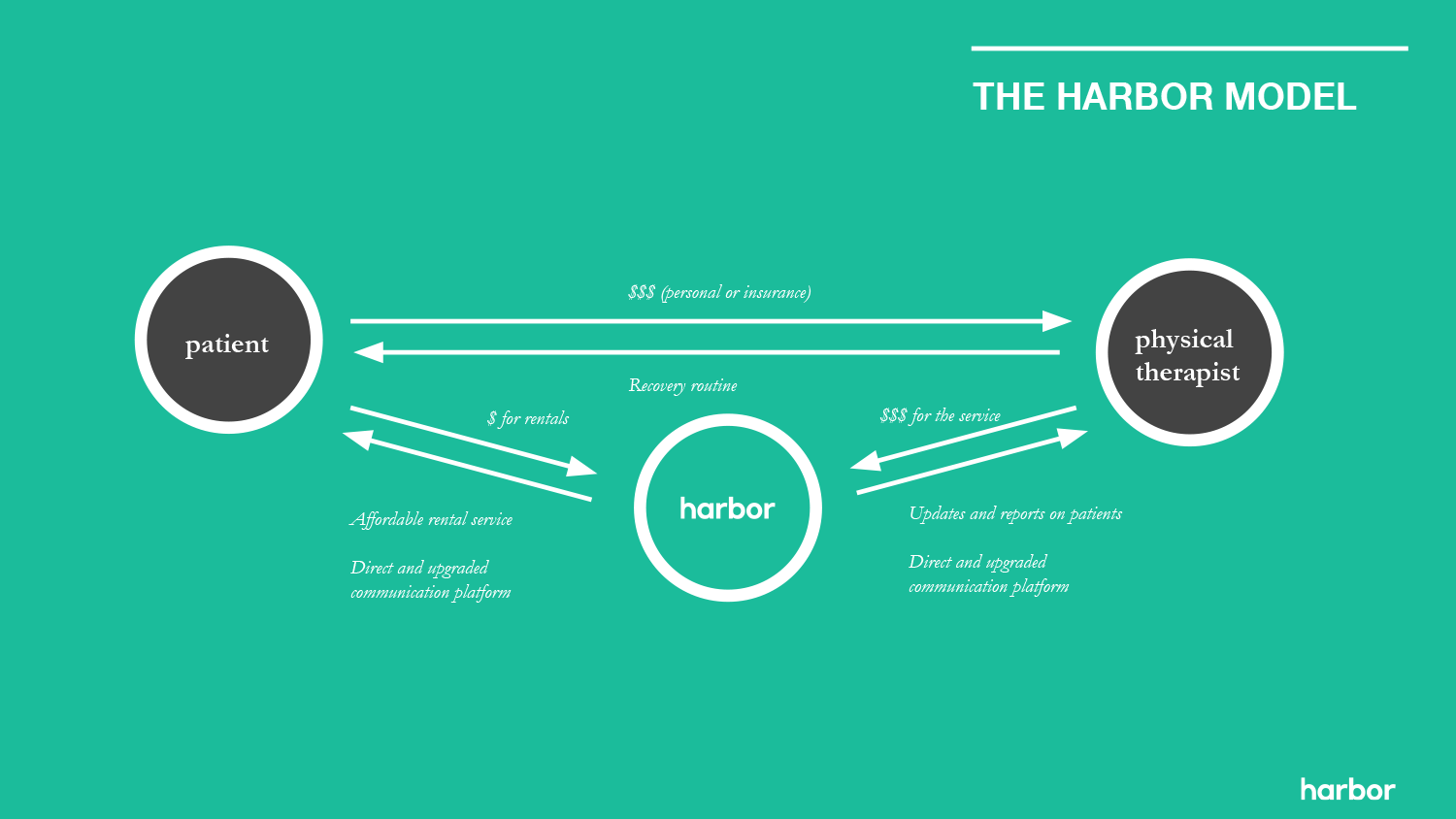
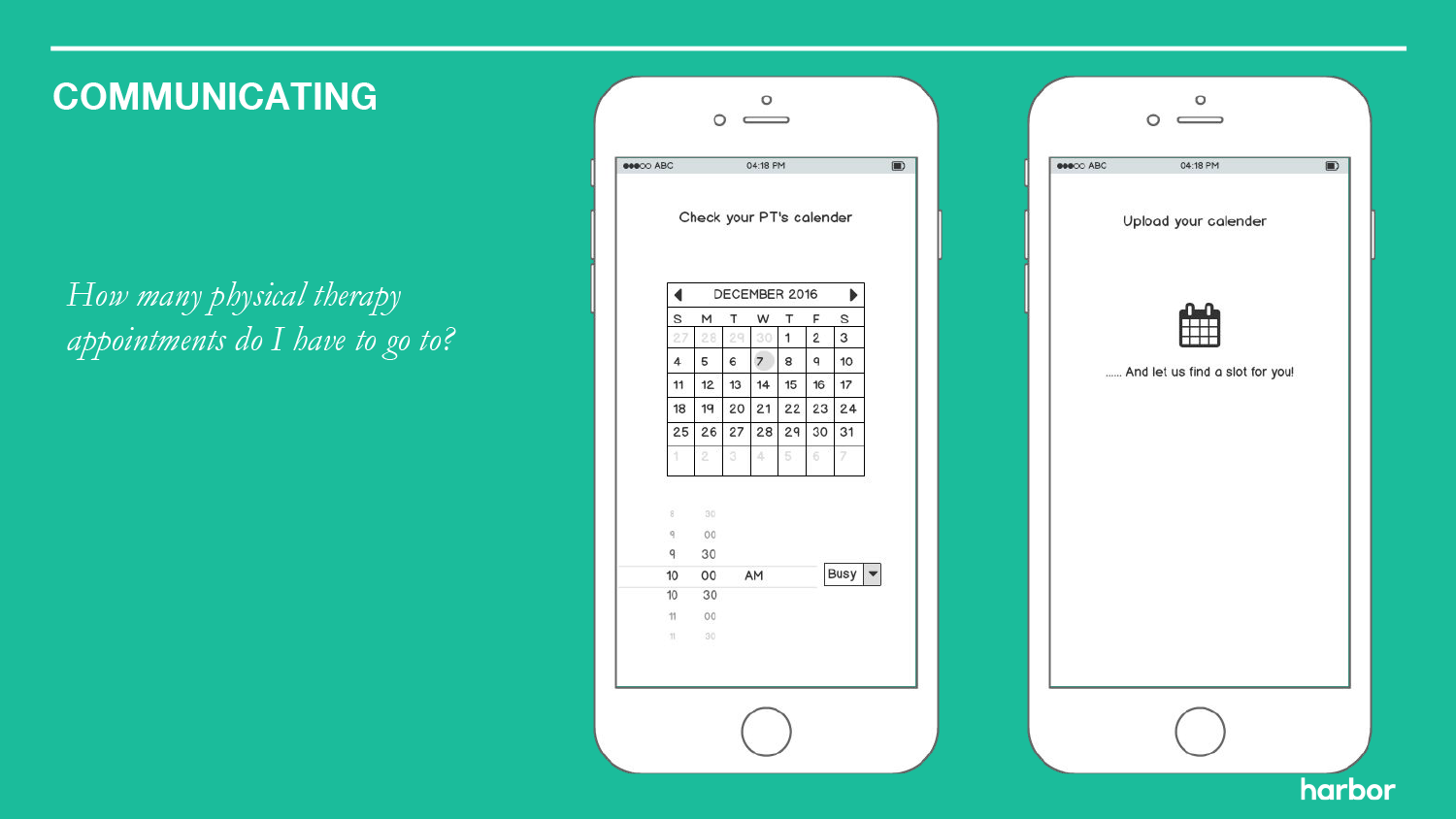
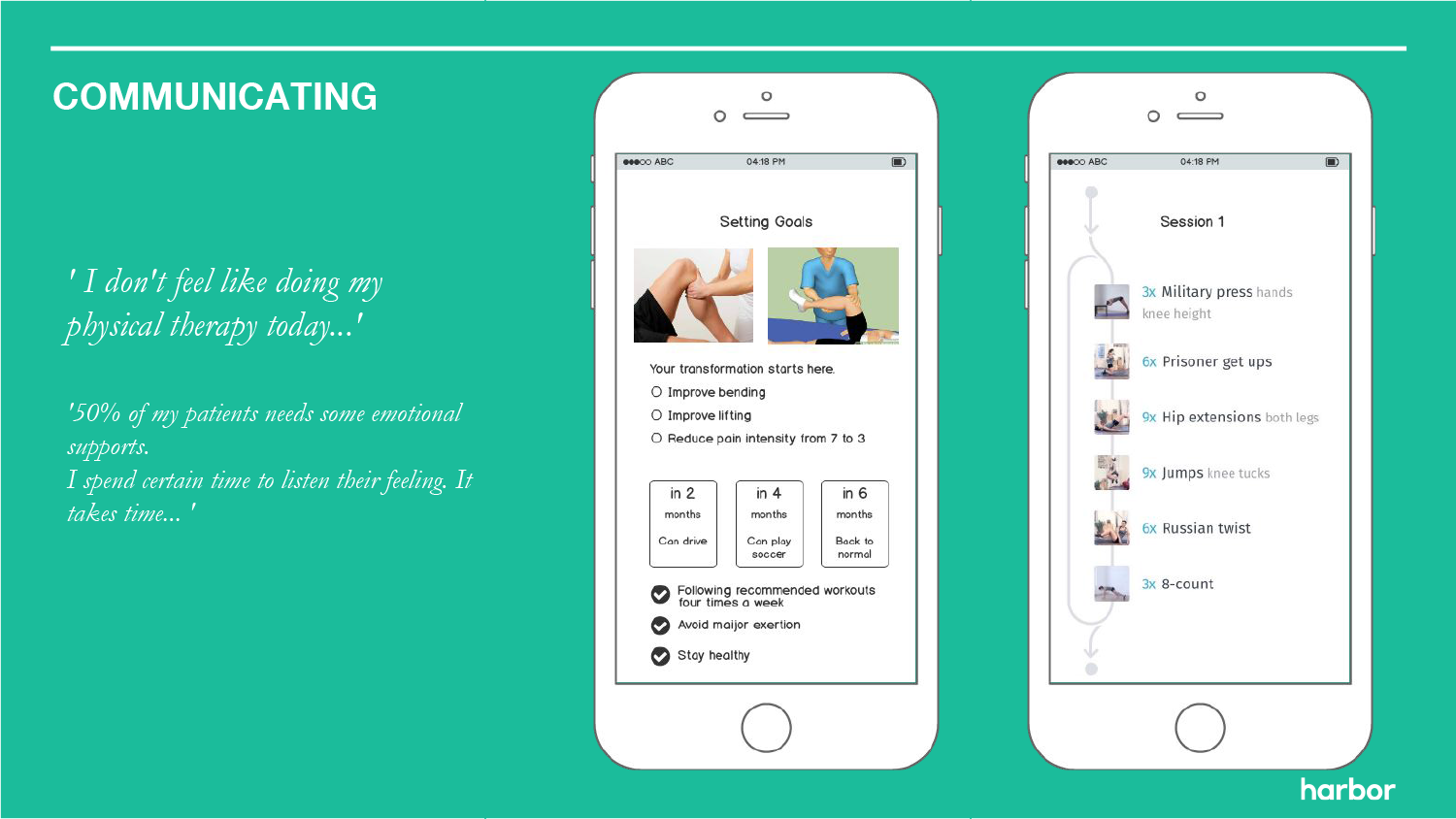


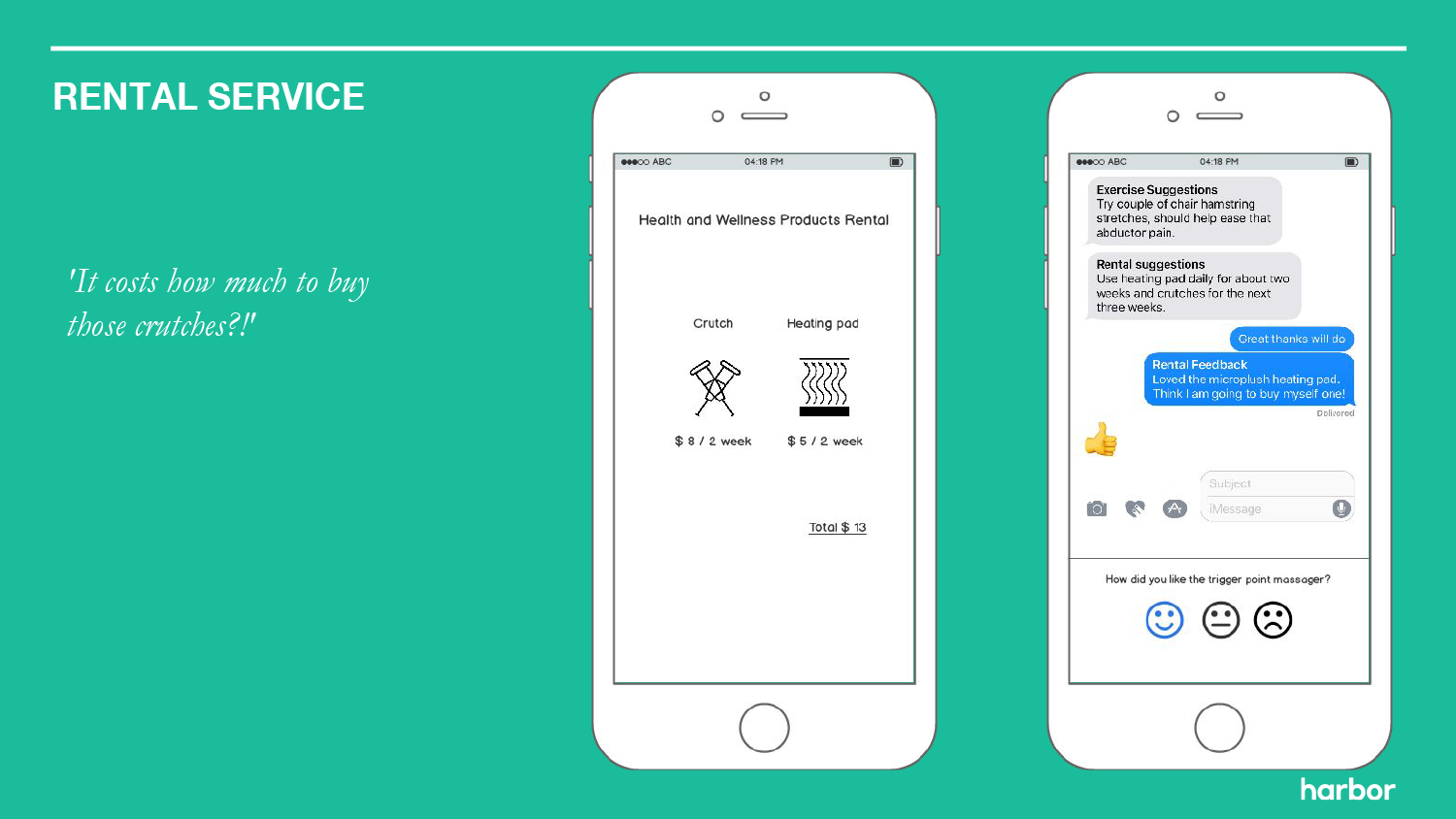
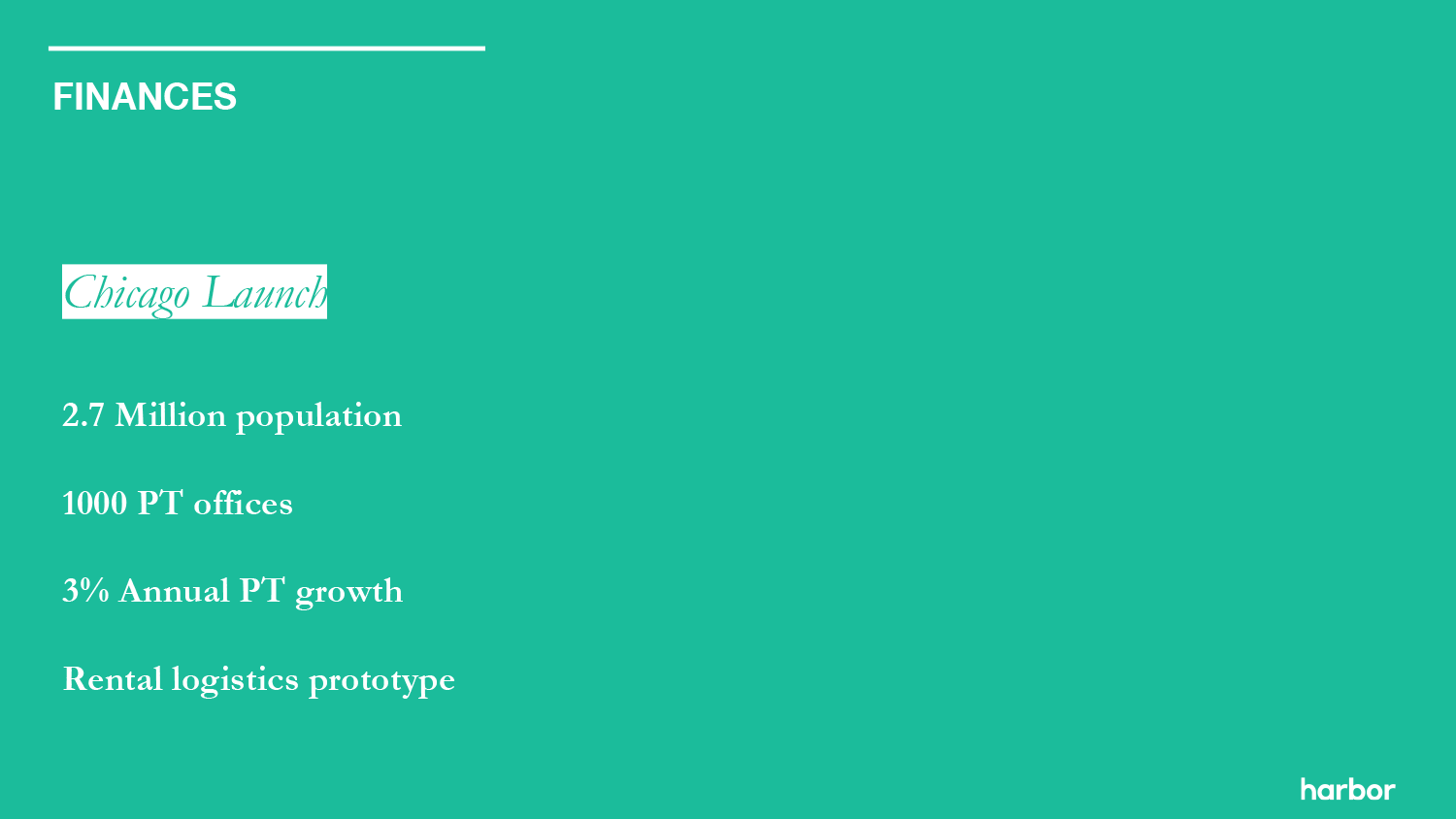
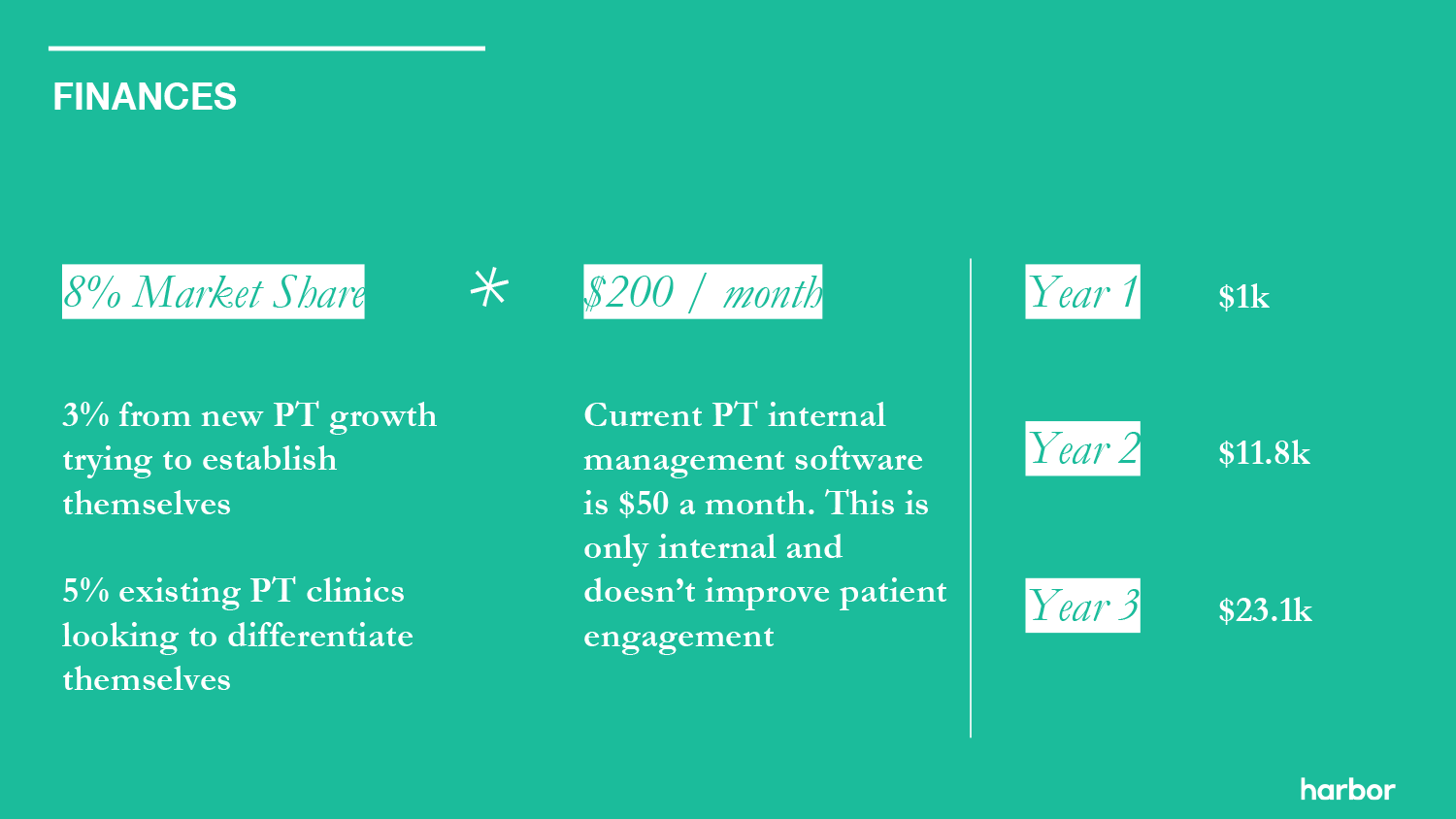
Approach & Contribution
Below are some of the key approaches we used
Journey Map
We started by looking at a very broad definition of disaster to understand how people recover from it. We looked at natural disasters, disintegration of families and physical injuries. We identified key states in the customer journey. Based on the activities that people perform and services available in each of these key states, we prioritized opportunity areas that we could further explore. We also identified the key emotions experienced in these states. I played a key role in these discussions.
Coding Data
We did ten interviews of which I was responsible for four. We came together as a team and coded the data inclusive of observations & quotes. We then identified key insights from these.
Design Principles
To move forward to the solution phase, I took the initiative of drafting design principles so that we could have a means to constantly test and validate our concepts against.
Storyboard
In the concept generation phase, we used storyboarding as our prototype and requested feedback from many of our interviewees to move forward. I sketched the app prototypes for the storyboard.
Service Blueprint
To ensure a smooth front end to back end process, we created a service blueprint and fine tuned our final app prototype.
Course Attributes & My Learning
This course was a 15 week 3 credit workshop class taught by Adjunct Professor April Starr. It was a good learning experience with my team members Maho Kohga and Ian Morrow. This course specifically helped me with the following concepts -
- Defining the moments that matter in the user experience that reinforce the value proposition of the service
- Different types of prototyping like behavioral prototypes, procedural prototypes and appearance prototypes




